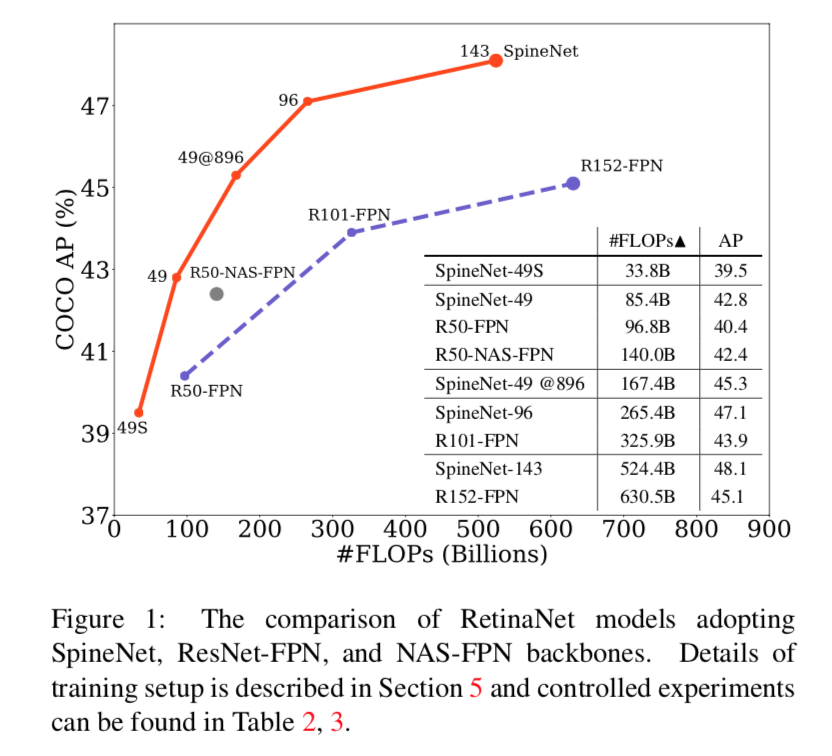SpineNet: Learning Scale-Permuted Backbone for Recognition and Localization
动机
- object detection task
- requiring simultaneous recognition and localization
- solely encoder performs not well
- while encoder-decoder architectures are ineffective
propose SpineNet
- scale-permuted intermediate features
- cross-scale connections
- searched by NAS on detection COCO
- can transfer to classification tasks
在轻量和重量back的一阶段网络中都涨点领先

- object detection task
论点
- scale-decreasing backbone
- throws away the spatial information by down-sampling
- challenging to recover
- 接一个轻量的FPN:
- scale-permuted model
- scales of features can increase/decrease anytime:retain the spacial information
- connections go across scales:multi-scale fusion
- searched by NAS
- 是一个完整的FPN,不是encoder-decoder那种可分的形式
- directly connect to classification and bounding box regression subnets
- base on ResNet50
- use bottleneck feature blocks
- two inputs for each feature blocks
- roughly the same computation
- scale-decreasing backbone
方法
formulation
- overall architecture
- stem:scale-decreased architecture
- scale-permuted network
- blocks in the stem network can be candidate inputs for the following scale-permuted network
- scale-permuted network
- building blocks:$B_k$
- feature level:$L_3 - L_7$
- output features:1x1 conv,$P_3 - P_7$
- overall architecture
search space
scale-permuted network:
- block只能从前往后connect
- based on resNet blocks
- channel 256 for $L_5, L_6, L_7$
cross-scale connections:
two input connections for each block
from lower ordering block / stem
resampling
- narrow factor $\alpha$:1x1 conv
- 上采样:interpolation
- 下采样:3x3 s2 conv
element-wise add

block adjustment
- intermediate blocks can adjust its scale level & type
- level from {-1, 0, 1, 2}
- select from bottleneck / residual block
family of models
- R[N] - SP[M]:N feature layers in stem & M feature layers in scale-permuted layers
- gradually shift from stem to SP
with size decreasing


spineNet family
- basic:spineNet-49
- spineNet-49S:channel数scaled down by 0.65
- spineNet-96:double the number of blocks
- spineNet-143:repeat 3 times,fusion narrow factor $\alpha=1$
- spineNet-190:repeat 4 times,fusion narrow factor $\alpha=1$,channel数scaled up by 1.3
实验
在mid/heavy量级上,比resnet-family-FPN涨出两个点

在light量级上,比mobileNet-family-FPN涨出一个点
